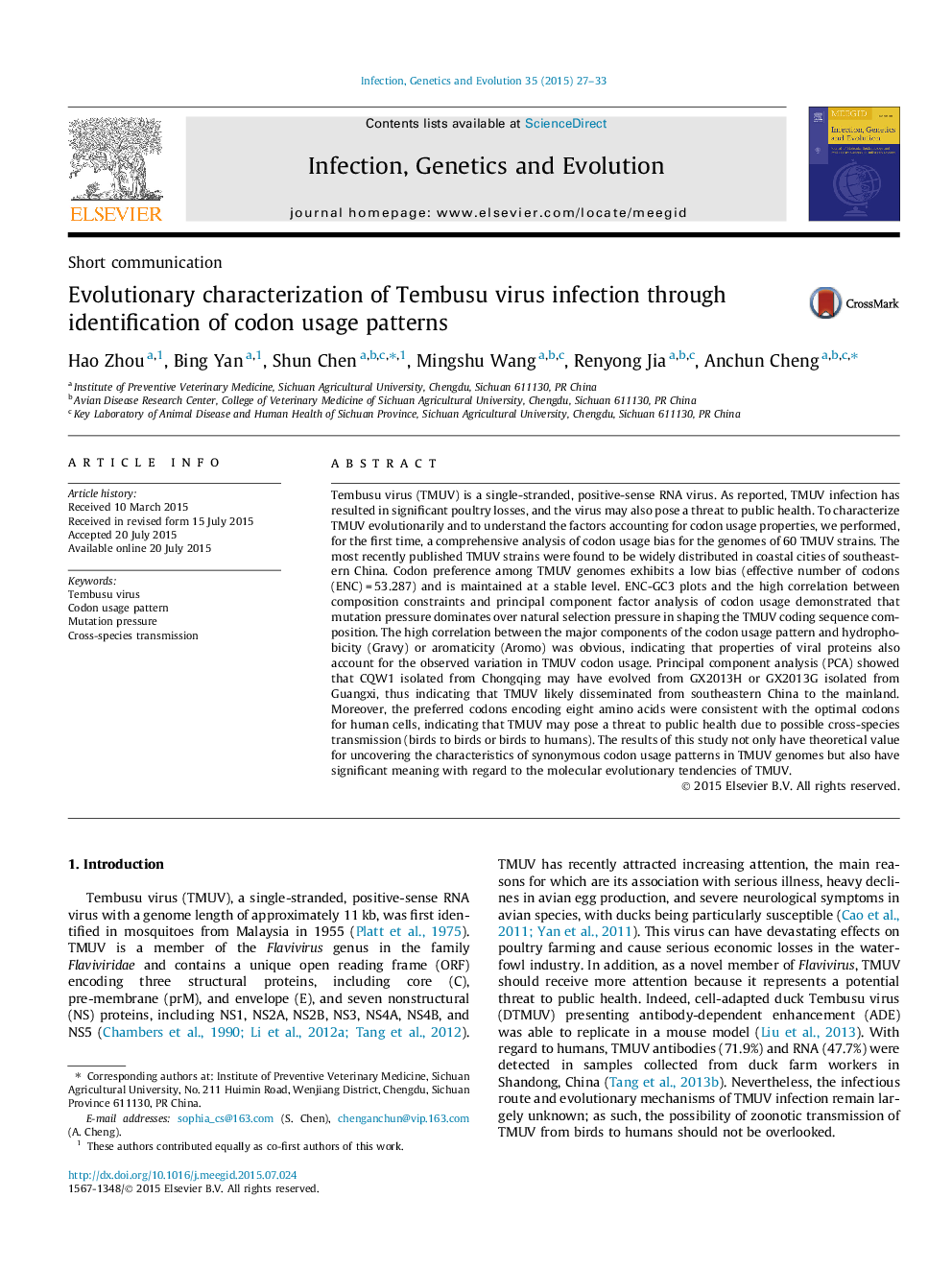| کد مقاله | کد نشریه | سال انتشار | مقاله انگلیسی | نسخه تمام متن |
|---|---|---|---|---|
| 5908458 | 1570168 | 2015 | 7 صفحه PDF | دانلود رایگان |

- The characteristics of synonymous codon usage pattern in the TMUV were analyzed.
- The factors accounting for the evolutional processes of TMUV codon usage bias were identified.
- TMUV potential infection to public health should not be ignored.
Tembusu virus (TMUV) is a single-stranded, positive-sense RNA virus. As reported, TMUV infection has resulted in significant poultry losses, and the virus may also pose a threat to public health. To characterize TMUV evolutionarily and to understand the factors accounting for codon usage properties, we performed, for the first time, a comprehensive analysis of codon usage bias for the genomes of 60 TMUV strains. The most recently published TMUV strains were found to be widely distributed in coastal cities of southeastern China. Codon preference among TMUV genomes exhibits a low bias (effective number of codons (ENC)Â =Â 53.287) and is maintained at a stable level. ENC-GC3 plots and the high correlation between composition constraints and principal component factor analysis of codon usage demonstrated that mutation pressure dominates over natural selection pressure in shaping the TMUV coding sequence composition. The high correlation between the major components of the codon usage pattern and hydrophobicity (Gravy) or aromaticity (Aromo) was obvious, indicating that properties of viral proteins also account for the observed variation in TMUV codon usage. Principal component analysis (PCA) showed that CQW1 isolated from Chongqing may have evolved from GX2013H or GX2013G isolated from Guangxi, thus indicating that TMUV likely disseminated from southeastern China to the mainland. Moreover, the preferred codons encoding eight amino acids were consistent with the optimal codons for human cells, indicating that TMUV may pose a threat to public health due to possible cross-species transmission (birds to birds or birds to humans). The results of this study not only have theoretical value for uncovering the characteristics of synonymous codon usage patterns in TMUV genomes but also have significant meaning with regard to the molecular evolutionary tendencies of TMUV.
Journal: Infection, Genetics and Evolution - Volume 35, October 2015, Pages 27-33